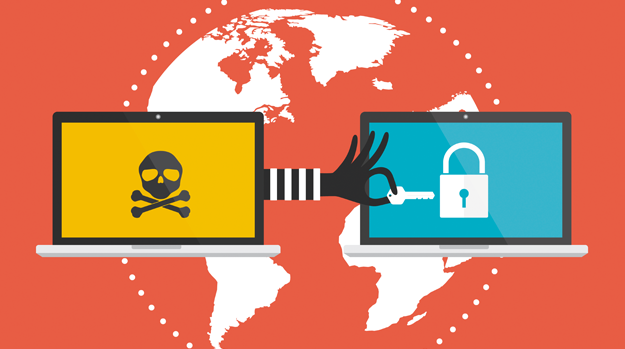Zero-Day Exploit Prevention : Defending Against the Unknown

What if the greatest threat to your organization was something you couldn’t see or prepare for? Zero-Day Exploit Prevention is the answer to this looming danger, addressing vulnerabilities that attackers exploit before anyone even knows they exist. These hidden flaws, weaponized by cybercriminals, can lead to catastrophic breaches, compromising sensitive data and halting operations. The question isn’t if you’ll face these threats—it’s when. Are your defenses ready? By embracing proactive strategies and cutting-edge solutions, you can protect your systems, fortify your defenses, and stay one step ahead in the fight to defend against the unknown.
Table of Contents
What Is a Zero-Day Exploit?

A zero-day exploit is a cyberattack that leverages a previously unknown vulnerability in software, hardware, or firmware. These vulnerabilities are termed “zero-day” because developers have zero days to create a fix before the exploit is weaponized. This small window of opportunity gives attackers a significant advantage, enabling them to bypass traditional defenses and wreak havoc on systems. These exploits often serve as entry points for data theft, espionage, or ransomware deployment, leaving victims scrambling to respond.
Effective Zero-Day Exploit Prevention is critical to mitigating these threats. By combining proactive monitoring, robust patch management, and advanced security technologies, organizations can detect and neutralize suspicious activity before it escalates. Without such measures, the hidden nature of zero-day vulnerabilities can leave systems dangerously exposed, putting sensitive data and operational integrity at risk.
What Is a Zero-Day Exploit Prevention?
Zero-Day Exploit Prevention is the proactive strategy of defending against cyberattacks that exploit undiscovered vulnerabilities in software, hardware, or firmware. These “zero-day” vulnerabilities are unknown to developers, leaving systems exposed until a patch is created. Attackers use these flaws to infiltrate networks, steal sensitive data, or disrupt operations, often before any defenses are in place.
To counter these threats, Zero-Day Exploit Prevention involves advanced security practices such as real-time monitoring, behavioral analysis, and next-generation antivirus solutions. Organizations also rely on rigorous patch management to address known weaknesses and minimize exposure. By adopting these measures, businesses can shield their systems from emerging threats and protect their critical assets in an unpredictable digital landscape.
Systems That Are Common Targets for Zero-Day Attacks
| System Type | Vulnerabilities Targeted | Zero-Day Exploit Prevention |
| Operating Systems | Flaws in the kernel, device drivers, or system APIs can provide attackers with full control over the system. These vulnerabilities can lead to privilege escalation, data exfiltration, or system compromise. | Regular patching, endpoint protection, and real-time monitoring for suspicious behavior. Zero-day detection technologies, such as AI-based tools, identify abnormal patterns in system operations, reducing the attack surface. |
| Web Browsers | Vulnerabilities in rendering engines, JavaScript interpreters, or browser plugins can allow attackers to execute malicious code, steal cookies, or redirect users to malicious websites. | Behavioral analysis and content security policies can identify and block harmful scripts. Frequent browser and plugin updates, along with the use of web application firewalls, mitigate web-based attack risks. |
| Enterprise Applications | Popular enterprise tools, such as CRM systems, email servers, and collaboration platforms, are often targeted to gain access to confidential business data. Exploits may enable attackers to monitor communications or deploy ransomware. | Implementing multifactor authentication, encrypting sensitive communications, and enforcing role-based access control (RBAC) limit the potential impact of zero-day exploits on enterprise tools. |
| IoT Devices | IoT devices are typically less secure, with many running outdated software and unpatched vulnerabilities. Exploits in these devices can allow attackers to infiltrate networks, hijack connected devices, or access sensitive data. | Network segmentation isolates IoT devices from critical infrastructure. Device hardening, secure coding practices, and continuous vulnerability scanning reduce the risk of exploitation. |
| Mobile Devices | Exploits in mobile OS or apps can give attackers access to contacts, location data, passwords, and private messages. These devices are also susceptible to remote control, malware installation, and phishing. | Mobile device management (MDM) solutions enforce security policies like app whitelisting, encryption, and secure VPN connections. Regular updates and secure app vetting prevent exploitation through mobile devices. |
| Cloud Infrastructure | Misconfigurations or weak security controls in cloud platforms such as AWS, Microsoft Azure, and Google Cloud can be exploited to steal sensitive data or execute unauthorized code on shared resources. | Cloud security best practices like IAM (Identity and Access Management), continuous monitoring, and encryption of data in transit and at rest can prevent unauthorized access to cloud environments. |
| Databases | SQL injection and vulnerabilities in database management systems (DBMS) allow attackers to modify or delete sensitive information. Flaws in user authentication and authorization mechanisms are common points of attack. | Encrypting stored data, applying input validation to prevent SQL injections, and implementing strict access controls help prevent unauthorized database access. Security patches should be applied promptly to address known flaws. |
| Network Devices | Routers, firewalls, and switches are commonly targeted due to their role in controlling network traffic. Exploiting a zero-day vulnerability in these devices can allow attackers to intercept communications or infiltrate networks. | Regular firmware updates, using secure protocols for device management, and configuring robust firewalls with deep packet inspection (DPI) help prevent unauthorized access. Network monitoring for abnormal traffic can detect malicious activity early. |
| Virtual Machines | Hypervisors and virtualization software often contain flaws that could allow an attacker to escape a VM and attack the underlying host or other virtual machines. This can lead to unauthorized access to sensitive data or disruption of services. | Securing hypervisor configurations, ensuring strong isolation between VMs, and continuous monitoring of virtual environments can mitigate these risks. Additionally, enforcing the principle of least privilege (PoLP) within virtual environments limits potential damage. |
In a world of constant cyber evolution, Zero-Day Exploit Prevention is the cornerstone of proactive defense, where preparedness meets resilience.
Best Practices for Zero-Day Attack Prevention
1. Monitor Reported Vulnerabilities
One of the most proactive ways to defend against zero-day exploits is to stay informed about newly reported vulnerabilities. As cyber threats evolve, software vendors and security researchers continuously uncover flaws in systems, applications, and devices. These vulnerabilities, once disclosed, become potential targets for attackers who can exploit them until patches are available.
Monitoring vulnerability databases, such as the National Vulnerability Database (NVD), or subscribing to specialized security bulletins from vendors like Microsoft, Google, or Apple is crucial. By staying on top of these reports, you can identify whether any of the vulnerabilities affect your environment and prioritize which patches or mitigation strategies to apply.
Additionally, leveraging threat intelligence platforms can provide real-time alerts about emerging threats, including zero-day vulnerabilities. By promptly addressing these vulnerabilities with necessary countermeasures, such as temporary workarounds or fixes, organizations can limit their exposure and mitigate the risk of exploitation. This proactive approach is essential for Zero-Day Exploit Prevention, reducing the window of opportunity for attackers.
2. Install Next-Gen Antivirus Solutions (NGAV)
Traditional antivirus software relies heavily on signature-based detection, which may not be effective against zero-day exploits—attacks that take advantage of vulnerabilities not yet known to the public or security vendors. To counter this, Next-Gen Antivirus Solutions (NGAV) integrate advanced technologies like machine learning, behavioral analysis, and heuristic scanning, providing a more robust defense against evolving threats.
NGAV solutions focus on detecting suspicious behavior rather than just matching known malware signatures. They monitor how files and programs behave in real time, identifying malicious activity based on patterns rather than known code. This proactive approach allows NGAV to detect and block zero-day exploits even if the specific exploit has not been previously recognized.
Incorporating NGAV into your cybersecurity strategy enhances Zero-Day Exploit Prevention, offering a layered defense that adapts to new attack methods. With its ability to detect anomalies and prevent system compromise, NGAV is crucial for safeguarding against both known and unknown threats.
3. Perform Rigorous Patch Management
One of the most effective strategies in Zero-Day Exploit Prevention is a rigorous patch management process. When a vulnerability is discovered, the vendor typically releases a patch or update to fix the flaw. However, in the case of zero-day exploits, these vulnerabilities are often exploited before a patch is even available, leaving systems open to attack. Therefore, proactively managing patches is essential in minimizing the risk of exploitation.
Implementing a structured patch management strategy involves regularly scanning for updates across all software, hardware, and systems in use. Prioritize the patching of critical vulnerabilities and test updates in a controlled environment to ensure they don’t inadvertently disrupt business operations. Additionally, keeping track of vendor release schedules and subscribing to security bulletins can help organizations stay informed and respond quickly when new patches are available.
4. Install a Robust Web Application Firewall
A Web Application Firewall (WAF) is a critical layer of defense against zero-day attacks targeting web applications and APIs. Zero-day vulnerabilities often exploit weaknesses in web applications, such as flaws in code, input validation, or session management. Without proper protection, these flaws can lead to severe breaches, including data theft, unauthorized access, or service disruption.
A robust WAF monitors and filters incoming web traffic to detect malicious attempts and block exploitations before they reach the application. By analyzing HTTP requests and responses in real time, the WAF can identify abnormal patterns, such as SQL injection, cross-site scripting (XSS), and other web-based threats. Even in the absence of a specific patch for a zero-day vulnerability, a well-configured WAF can mitigate many attack methods by blocking harmful traffic based on established rules and behavior analysis.
5. Practice the Principle of Least Privilege
The Principle of Least Privilege (PoLP) is a fundamental security practice that minimizes the potential impact of zero-day exploits by restricting user access to only the resources they need to perform their tasks. By limiting privileges, organizations can reduce the attack surface, preventing attackers from gaining broad access to critical systems even if they exploit a vulnerability.
Under PoLP, users, applications, and systems are granted the minimum level of permissions required to function. For example, an employee who needs to access a specific set of data should not have administrative rights to other sensitive systems. Similarly, applications should only be given the exact permissions necessary for their operations, rather than broad access to the entire network.
By applying PoLP, organizations can contain the damage caused by a zero-day attack. Even if an attacker successfully exploits a vulnerability, the scope of their actions is limited by the restricted permissions, making it more difficult to escalate privileges or move laterally within the network. This approach is a crucial part of Zero-Day Exploit Prevention, as it adds an additional layer of defense to systems, minimizing the potential impact of unknown threats.
The key to safeguarding against unknown threats lies in Zero-Day Exploit Prevention, where early detection and swift action turn vulnerability into strength.
Conclusion
In the battle against cyber threats, Zero-Day Exploit Prevention is not just a reactive measure, but a proactive strategy to safeguard critical assets. As attackers continuously discover new vulnerabilities, the need for robust defenses has never been more pressing. By monitoring vulnerabilities, installing next-gen antivirus solutions, applying rigorous patch management, deploying web application firewalls, and practicing the principle of least privilege, organizations can fortify their security posture. While zero-day exploits remain a formidable challenge, a comprehensive security strategy can mitigate risks and ensure systems are resilient against unknown threats, protecting both data and reputation in an increasingly complex digital landscape.
Zero-day attacks are unpredictable, but with robust Zero-Day Exploit Prevention measures, you can turn uncertainty into security and protect your digital future.
FAQ: Zero-Day Exploit Prevention
- What is Zero-Day Exploit Prevention?
- Zero-Day Exploit Prevention refers to proactive security measures designed to detect, block, and mitigate attacks that exploit previously unknown vulnerabilities in software or systems, before patches are available.
- How do Zero-Day Exploits work?
- Zero-day exploits take advantage of vulnerabilities in software that are not yet known to the public or the vendor. Since no patch exists, these exploits can cause severe damage if not addressed through Zero-Day Exploit Prevention strategies.
- Why is Zero-Day Exploit Prevention important for my organization?
- With cyber threats constantly evolving, Zero-Day Exploit Prevention is crucial to protect sensitive data, maintain business continuity, and safeguard against attacks that can bypass traditional security defenses.
- What are some effective methods for Zero-Day Exploit Prevention?
- Effective methods include continuous monitoring of vulnerabilities, deploying next-gen antivirus solutions, performing regular patch management, using web application firewalls, and adhering to the principle of least privilege.
- Can Zero-Day Exploit Prevention stop all attacks?
- While Zero-Day Exploit Prevention significantly reduces the risk of attacks, no solution is foolproof. Combining multiple layers of defense and staying up-to-date with security practices is key to minimizing exposure.
- How can I implement Zero-Day Exploit Prevention in my organization?
- Implementing Zero-Day Exploit Prevention requires a comprehensive approach, including the use of advanced threat detection systems, regular vulnerability assessments, secure coding practices, and prompt patch deployment.
- What role does patch management play in Zero-Day Exploit Prevention?
- Patch management is crucial in reducing the window of vulnerability for known threats. While zero-day exploits target unknown flaws, regular patching helps close gaps and reduces the risk of future attacks once vulnerabilities are disclosed.





Başakşehir su sızıntısı tespiti Gizli Su Kaçağı Tespiti: “Duvarların içinde gizli bir kaçak vardı, çok kolay buldular. https://japapmessenger.com/ustaelektrikci
“This article is really informative and well-written!”
1woohc
buď vytvořil sám, nebo zadal externí firmě, ale vypadá to.
que eu mesmo criei ou terceirizei, mas parece que
|Hello to all, for the reason that I am actually keen of
Com tanto conteúdo e artigos, alguma vez se deparou com problemas de plágio ou violação de direitos de autor? O meu site tem muito conteúdo exclusivo que eu próprio criei ou
It contains fastidious material.|I think the admin of this website is actually working hard in favor of his site,
Com tanto conteúdo e artigos, vocês já se depararam com algum problema de plágio?
råb ud og sig, at jeg virkelig nyder at læse gennem dine blogindlæg.
reading this weblog’s post to be updated daily.
že spousta z něj se objevuje na internetu bez mého souhlasu.
apreciariam o seu conteúdo. Por favor, me avise.
Have you ever thought about writing an ebook or guest authoring on other websites? I have a blog based upon on the same subjects you discuss and would really like to have you share some stories/information. I know my subscribers would enjoy your work. If you’re even remotely interested, feel free to send me an e mail.
Tak skal du have!|Olá, creio que este é um excelente blogue. Tropecei nele;
Hello, i think that i saw you visited my site so i came to “return the favor”.I’m attempting to find things to improve my web site!I suppose its ok to use some of your ideas!!
råb ud og sig, at jeg virkelig nyder at læse gennem dine blogindlæg.
Com tanto conteúdo e artigos, alguma vez se deparou com problemas de plágio ou violação de direitos de autor? O meu site tem muito conteúdo exclusivo que eu próprio criei ou
) سأعيد زيارتها مرة أخرى لأنني قمت بوضع علامة كتاب عليها. المال والحرية هي أفضل طريقة للتغيير، أتمنى أن تكون غنيًا و
Muito obrigado!}
4gkuok
Também tenho o seu livro marcado para ver coisas novas no seu blog.
Your point of view caught my eye and was very interesting. Thanks. I have a question for you.